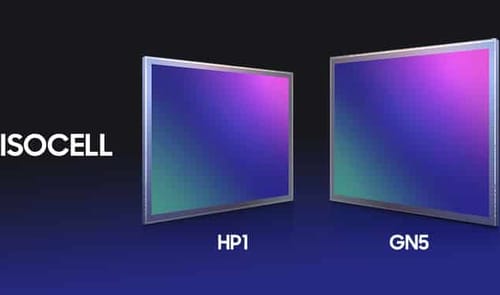 |
| Samsung announces a 200-megapixel sensor |
Samsung introduced ISOCELL HP1, the first 200-megapixel image sensor with 0.64 µm pixels, and ISOCELL GN5, the first Pan-Focus Dual Pixel Pro image sensor, with two LEDs in a single pixel of 1.0 µm.
Samsung has always been a pioneer in ultra-high-resolution pixel technology that has taken high-resolution image sensors to a new level.
Samsung continues to lead the next generation of mobile imaging technologies with ISOCELL HP1, which breaks down barriers, and ISOCELL GN5, which delivers ultra-fast AF.
ISOCELL HP1 is the first portable image sensor to support 200 megapixels. Based on the company's most advanced 0.64 micron pixels, ISOCELL HP1 delivers excellent precision in a small package that easily installs in mobile devices.
With ISOCELL HP1, the image contains a lot of detail, which means the image remains sharp even when cropped or resized.
ISOCELL HP1 uses new ChameleonCell technology for low-light imaging. This is a pixel binning technique that uses 2 x 2, 4 x 4, or the entire pixel array, depending on the environment.
In low-light environments, the ISOCELL HP1 converts into a 12.5MP image sensor with 2.56µm pixels by merging 16 adjacent pixels.
The newly formed 2.56 µm pixel has higher light absorption and sensitivity. Get brighter, clearer photos indoors or at night.
Samsung announces a 200-megapixel sensor
In a bright outdoor environment, the pixels can capture ultra-high-resolution images via mobile devices.
The ISOCELL HP1 sensor can record 8K videos at 30 frames per second with minimal field loss.
ISOCELL HP1 merges four adjacent pixels, reducing the resolution to 50 megapixels or 8192 x 6144 pixels for recording 8K (7680 x 4320 pixels) videos. This can be done without cropping or reducing the resolution of the entire image.
ISOCELL GN5 is the first 1.0µm image sensor built into Dual Pixel Pro. It is a kind of omnidirectional auto focus technology which can greatly improve the auto focus ability.
This technology places two horizontal or vertical photodiodes at each 1.0 µm pixel of the sensor. To get to know each other, the paradigm changes in all directions.
One million phase detection omnidirectional photodiodes cover all areas of the sensor. ISOCELL GN5 AF is instantly activated and enables sharper images in bright or poorly lit environments.
The image sensor also uses Samsung's pixel technology, which is the first to apply FDTI isolation technology to dual-pixel products.
Despite the small size of the photodiodes, FDTI technology enables each photodiode to absorb and store more light information. This increases the overall capacitance of the LED and reduces cross-pixel interference.
The company did not say when the new sensors would begin mass production. But samples are currently available to mobile phone manufacturers.